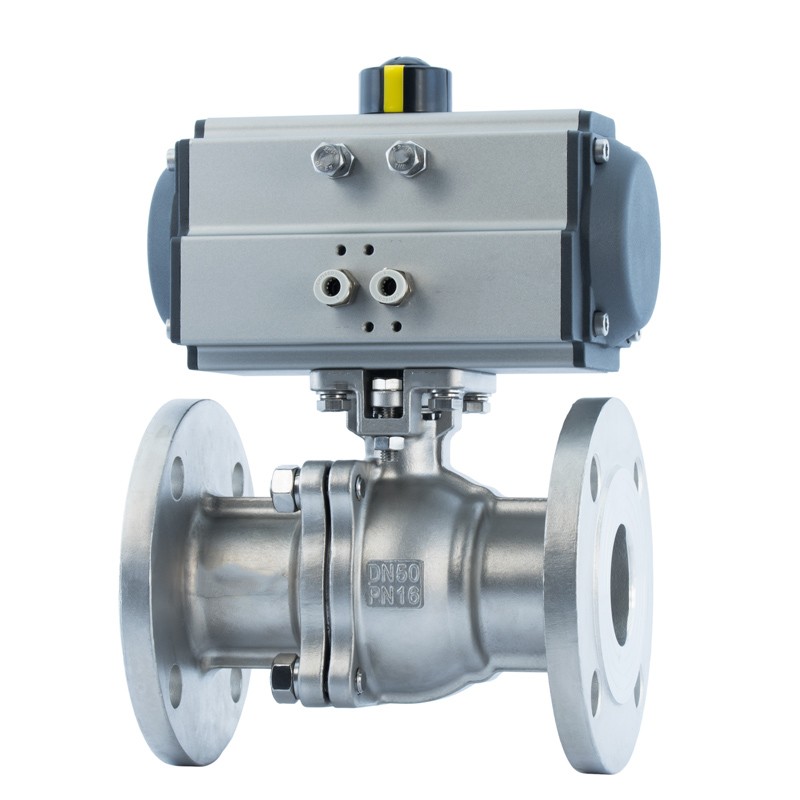pneumatic ball valve
Understanding Pneumatic Ball Valves Function, Benefits, and Applications
Pneumatic ball valves are essential components used in various industrial applications for controlling the flow of gases and fluids. These valves utilize the simple mechanism of a spherical ball, which features a bore in the center that aligns with the pipeline when open and is perpendicular when closed. This design not only allows for quick on/off operation but also provides excellent sealing capabilities, which is crucial for maintaining system pressure and preventing leaks.
Functionality
The functionality of pneumatic ball valves is straightforward yet effective. When the valve is actuated—typically by a pneumatic actuator—it rotates the ball a quarter turn. This rotation opens or closes the pathway for fluid or gas to pass through. The simplicity of this mechanism ensures that the response time is quick, allowing for rapid flow control. Additionally, pneumatic ball valves can be designed with two-way or three-way configurations, making them versatile for various applications.
The actuator used to operate these valves can vary in type, including single-acting and double-acting mechanisms. Single-acting actuators rely on spring return, meaning they require air pressure to open the valve and the spring returns it to the closed position when the pressure is removed. On the other hand, double-acting actuators require pressurized air for both opening and closing the valve, offering more control in certain applications.
Benefits
One of the most significant advantages of pneumatic ball valves is their durability and reliability
. The design minimizes pressure drop when the valve is open and allows for a full-flow capability, ensuring efficient operation. They are also resistant to wear and tear because of their simple design and robust materials, often made of stainless steel or other corrosion-resistant alloys.Pneumatic ball valves are also user-friendly since they can be automatically controlled via control systems, contributing to the automation of industrial processes. The remote operation capability enhances safety, as personnel do not need to be in proximity to the potentially hazardous flowing medium during adjustments.
pneumatic ball valve

Moreover, these valves allow for precise control of flow rates, which can optimize processes and improve energy efficiency. Their ability to handle high-pressure applications without leaking adds to their attractiveness for industries that deal with critical fluids and gases.
Applications
The applications for pneumatic ball valves are diverse, spanning various sectors. In the oil and gas industry, they are used in pipelines to efficiently manage the flow of hydrocarbons. In the chemical industry, these valves play a crucial role in controlling the mixing process and managing aggressive fluids safely.
Pneumatic ball valves are also prevalent in the food and beverage industry, where hygiene and cleanliness are paramount. Their smooth design prevents residue build-up, and they can be easily cleaned, meeting strict sanitary standards. Furthermore, in wastewater treatment facilities, these valves help in controlling the flow of wastewater and manage various treatment processes effectively.
In HVAC systems, pneumatic ball valves regulate airflow, contributing to efficient heating, ventilation, and air conditioning. Their ability to operate with minimal effort makes them ideal for environments where control systems are computerized, and constant adjustments are necessary.
Conclusion
In summary, pneumatic ball valves are a pivotal part of modern industrial operations. Their reliable design, quick response time, and versatility make them indispensable across various sectors. As industries continue to evolve, the demand for efficient flow control solutions will likely grow, ensuring that pneumatic ball valves remain a critical element in achieving operational efficiency and safety.
-
The Key to Fluid Control: Exploring the Advantages of Ball Valves in Industrial SystemsNewsJul.09,2025
-
The Versatile World of 1, 2, and 3 Piece Ball ValvesNewsJul.09,2025
-
Stainless Steel Ball Valves: The Ideal Choice for Efficient Flow ControlNewsJul.09,2025
-
Optimizing Fluid Control with Ball Float ValvesNewsJul.09,2025
-
Manual Gate Valves: Essential for Control and EfficiencyNewsJul.09,2025
-
Everything You Need to Know About Butterfly ValvesNewsJul.09,2025
-
The Versatility of Wafer Type Butterfly ValvesNewsJul.08,2025




